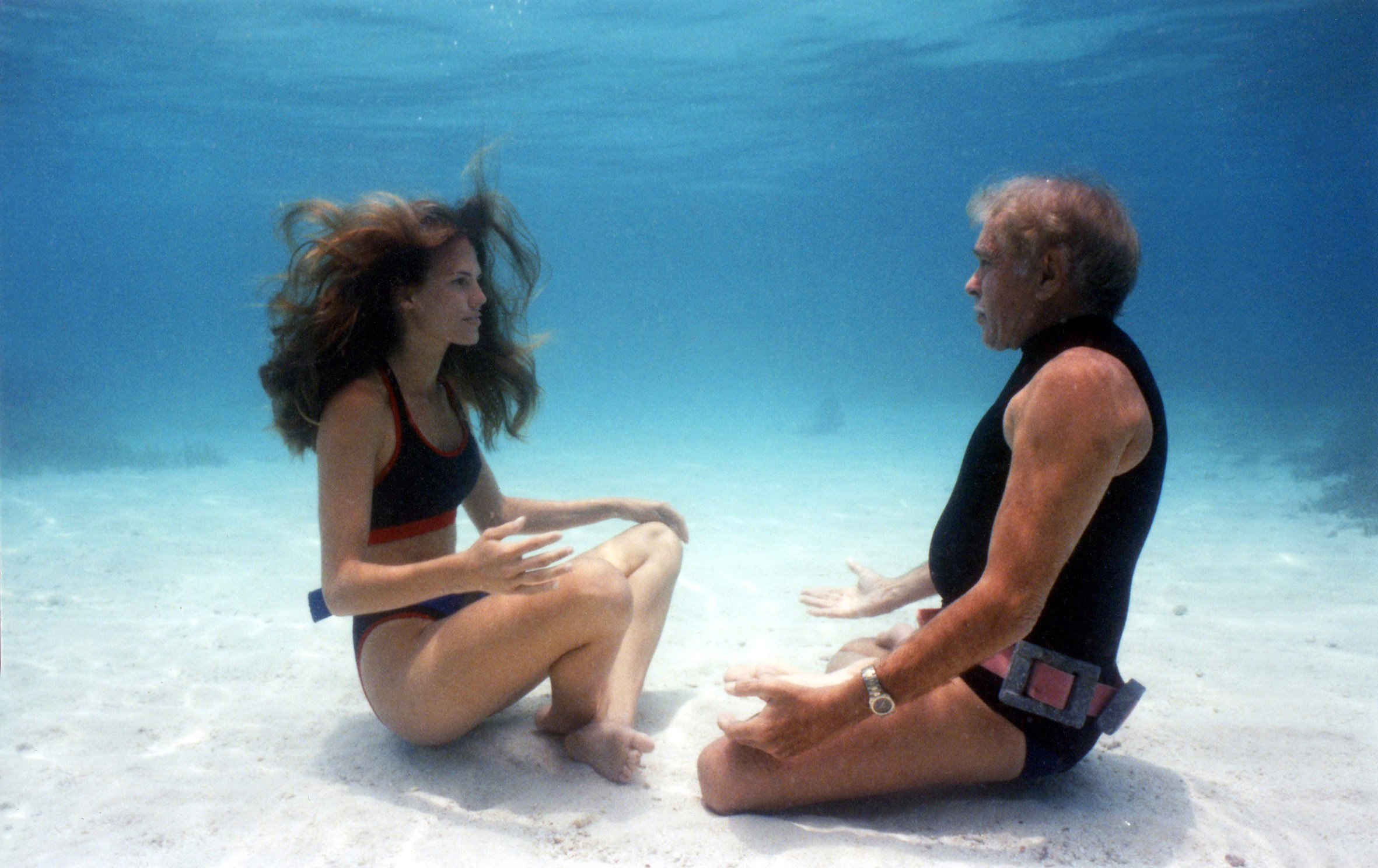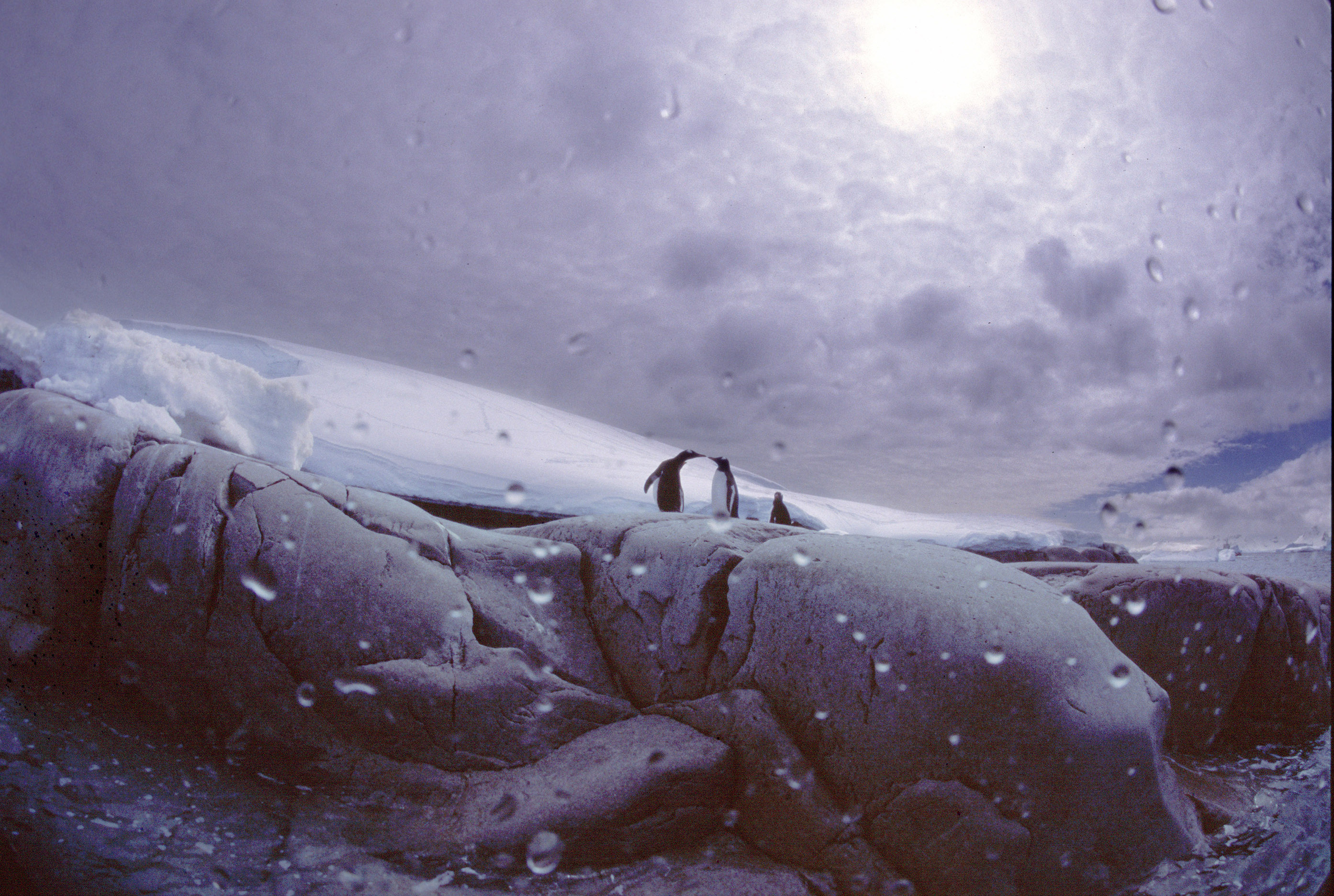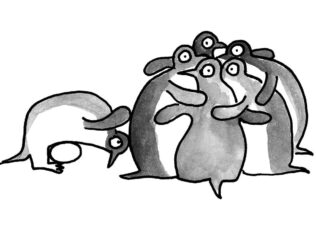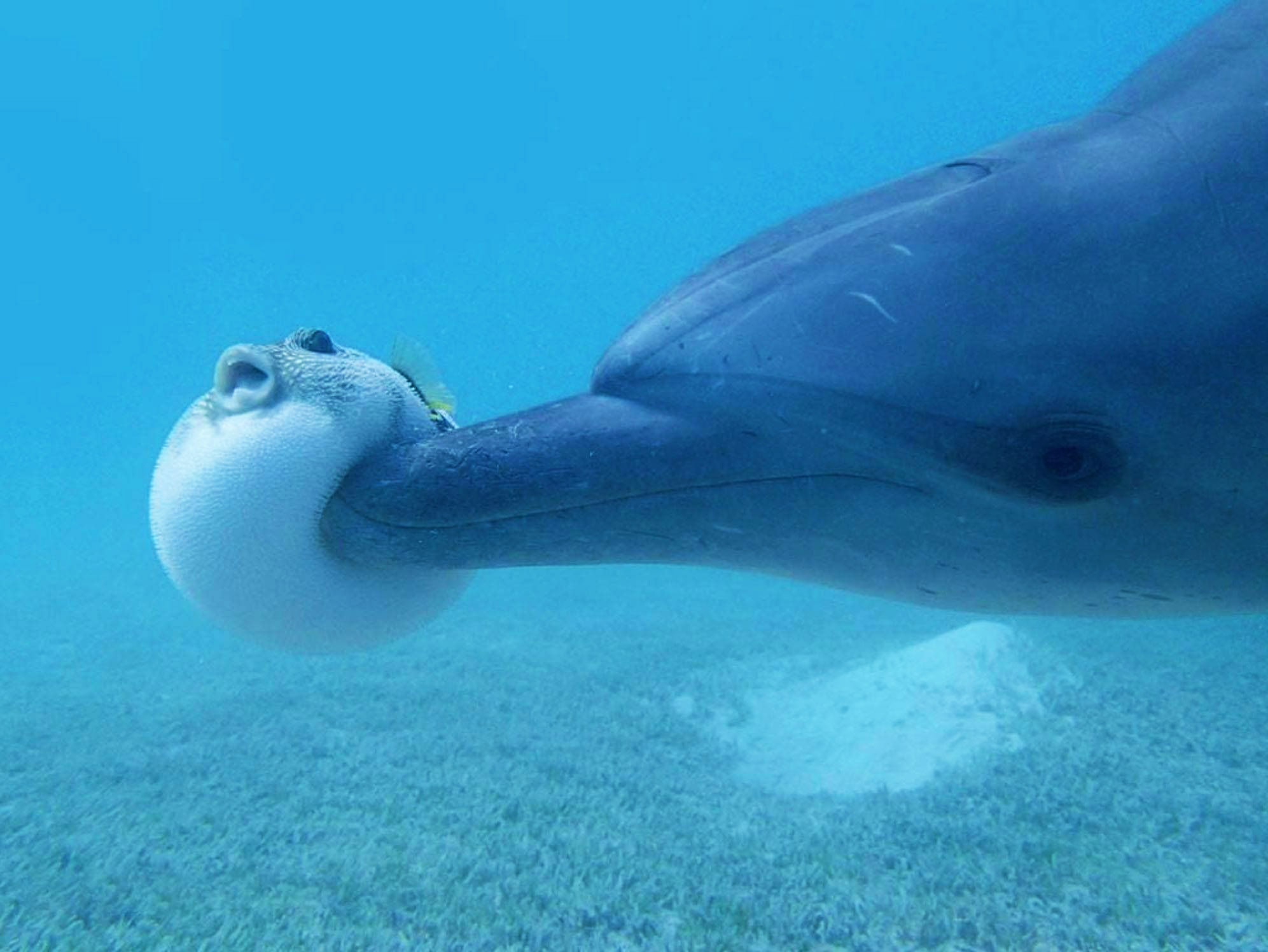
Diving on a single breath lets you have an encounter with yourself. That’s why free-diving is so often known as underwater meditation.
It’s 1957. Miami. A well-built man with a luxuriant mane of dark hair and a thin moustache walks into the Seaquarium. It’s 30-year-old Jacques Mayol, editor of the French newspaper La Floride Française and a Radio Canada correspondent. He’s received an assignment: a reportage on the first underwater surgical operation, to be carried out on a grouper who lives in one of the tanks. “Without knowing it, I was about to make a decisive step that would at that moment completely change the course of my life,” he would write 43 years later in his autobiography Homo Delphinus. That day he also couldn’t have had any idea that 19 years later he’d be the first freediver to descend to 100 metres, and 31 years later the whole world would find out about him from the Luc Besson film The Big Blue.
In the Seaquarium, Mayol went onto the catwalk over the main tank, where the dolphins lived. He had seen dolphins before. First in the Red Sea, when he was seven years old and was sailing with his family from China to France. Leaning on the steamship’s railing, he observed in silence how the dolphins would swim up to the sides of the ship: “But the thing that struck me the most were the dolphins’ eyes, which radiated intelligence, their eternal smile, and the almost human sound of their breathing. […] Even then, intuitively I sensed in their look, in their smile a message, a still-indefinable message. I felt that we had something in common, that the dolphins were a little like brothers who lived in the sea.”
Learning from the dolphins
This magical thought returned to Mayol on that fateful day in the Seaquarium. When he stood alone on the catwalk for a moment, the female dolphin Clown jumped out of the water. “It seemed as though she ‘recognized’ me, and that she wanted to tell me something,” Mayol thought, and seeing this, the trainer confirmed his feeling, telling him Clown had never behaved that way with a visitor around before. “Obviously, you caught her attention,” he added.
Research confirms this. Dolphins are mammals with exceptionally developed neocortices. They have self-awareness, and like people, they experience emotions. They can feel love, they consciously make friendships, including with people. They can rescue a drowning person, because they sense the fear and suffering of other beings and are capable of wanting to help those in need. In captivity, dolphins feel lonely. Isolation and closure can cause depression and psychosomatic reactions, such as nervous stomach ulcers. When captured, they have signs of post-traumatic stress, just like people after traumatic experiences.
“Even if dolphins in captivity form some kind of group, it’s usually made up of random individuals,” says Maciej Chełchowski, a doctoral student at the Marine Ecology Department of the Polish Academy of Sciences’ Institute of Oceanology. “They’re being killed by longing for their family and friends from their pod, and by the stress of being torn away from them. That’s why Clown at the Seaquarium, tired of companions that didn’t suit her, could feel sympathy for Mayol.” Mayol knew about this, but in those times nobody talked too much about the well-being of animals in captivity. Even though he was employed as their trainer, he was tormented by questions and doubts. What practical skills could he teach to dolphins? What use were all of these stupid things, as he called them, that he ordered them to do? Can a person love them? After which he answered his own question, sarcastically: “Yes: for we do, for our own personal pleasure, to domesticate and make slaves of them. Yes, to the extent to which they can be useful to us, naturally. But is this love?”
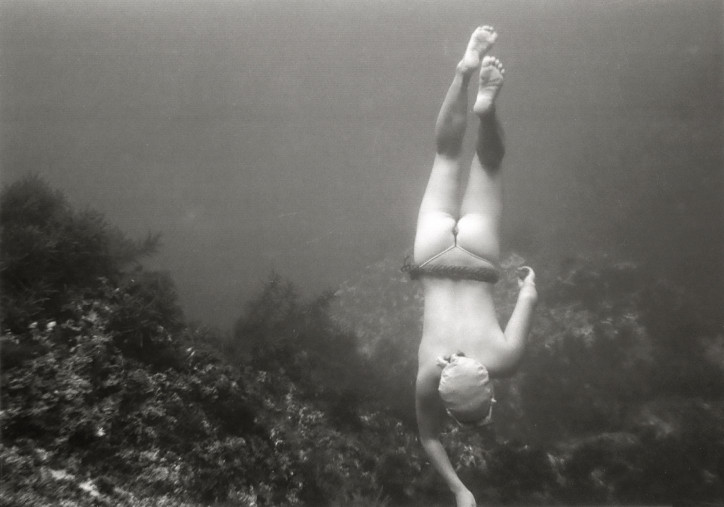
Disturbed by these thoughts, he decided that he needed to meet with the dolphins on their turf, underwater, holding his breath. He started by breaking the aquarium rules, and during a lunch break, while his supervisors were eating and there were no shows, Mayol, in just a bathing suit, mask and snorkel, without the clothes he had been wearing while working with the animals, jumped into the pool to swim with Clown. “I was in her house and I had nothing to teach her. On the contrary, I wanted to learn things from her. She taught me to hold my breath longer on every dive […] to let myself sink down; to be rocked by the movement of the water, and to integrate myself with the water totally, slowly, effortlessly, with great economy and efficacy of movement. […] She taught me how to behave underwater, in apnea, the way a feline behaves on land. […] What she taught me doesn’t seem like very much but it was a lot, because, thanks to those lessons, I was able to commit to the path that later led to my 100 meter dive.”
At first, he and the dolphin returned to the surface every 30 seconds. Over time, he says, they started to compete to see who could hold their breath underwater longer. 40 seconds. A minute. A minute and 10 seconds. A minute and a half, two, two and a half. He sat on the bottom of the pool with his legs crossed and meditated. Three and a half minutes. On a single breath he swam around the pool twice; he swam 150 metres with fins. “I became much less a terrestrial being and increasingly more aquatic,” he said.
Mother sea
What allowed Jacques Mayol to hold his breath so long was the diving reflex, also known as the diving response. It’s also used by dolphins, seals, otters. It’s a physiological reaction of the mammalian body to holding breath in the lungs. It’s particularly strong when we stop breathing under water. It consists of a reduction in the heart rate and a restriction on the flow of blood to the muscles and the organs of the abdominal cavity, which reduces oxygen use. This in turn allows longer endurance under water. A dolphin can last about 10 minutes. A woman, 9 minutes and 3 seconds. A man, 11 minutes and 35 seconds. The official human records for static breath holding, recognized by the organization AIDA International, are held by the late Russian Natalia Molchanova and the Frenchman Stéphane Mifsud.
Humans use the diving reflex for the first time at birth. “During birth, when the child is on the way into the world, there’s a moment of oxygen deprivation,” says Marcin Baranowski, a free-diver and a physiologist at the Medical University of Białystok. “The contractions of the uterus temporarily cut off the flow of blood to the placenta, and thus of oxygen for the baby. And that’s when the body protects itself with the diving reaction, redirecting oxygen-rich blood to the organs that are key for life, meaning to the heart and the brain.”
From the moment a child comes into the world and grabs their first breath, the diving reflex weakens over the years. Interestingly, many free-divers compare their first breath after emerging from the depths with the moment of birth. As if the memory of the feeling of holding your breath were written into your body and unconsciously returns when you dive. “Our origin is the sea, and our maternal origin is nothing more than an extension of it. Perhaps it is a professional distortion of deep sea diving, but it is impossible for me to evoke the image of ‘deep sea’ without associating it with the maternal womb or vice versa. […] Even before I began my experiments [with freediving], I thought of the ocean as a giant female womb.”
If we stick with this metaphor, we can think of the ocean as the place that gives us life, and that leads to the world of the first freedivers, meaning the underwater nomads who hunted fish, crustaceans, snails, oysters, algae and sponges. The oldest traces date back to the Mesolithic Era, the middle of the Stone Age, 10,000 years BCE, on the coast of the Baltic and the North Sea, to the ancestors of today’s Scandinavians. They created the Kjokkenmoddinger civilization – the mussel eaters. Its members perfected their diving technique over thousands of years, from the last glaciation until the dawn of the Bronze Age, when the oceans receded to their current level, we read in Homo Delphinus. There are hypotheses that diving was the domain of women, while the men fished and hunted.
This may have been the case. In the autumn and winter near the Japanese islands, where ama dived (in Japanese, ama means “sea woman”), and on the South Korean island of Jeju, where haenyo (again, “sea women”) descended under the waves, the water is cold. “Long ago, there were no diving bells or wetsuits, and you went into the water as you were, meaning naked,” Baranowski says. “Women usually have more fatty tissue than men, and that insulates the body well and reduces the loss of heat. So the hypothesis is that in the regions of the world where the waters are cooler, the women dived, because they got cold slower than men. In the remaining parts of the globe, where the water is warm, it’s the men who fished. They have a greater predisposition than women to diving while holding their breath, if for no other reason than that their lungs are bigger.”
You just dive!
Until the 1980s, the ama didn’t put on wetsuits, and they started to use masks only in the 1960s. They were afraid that they would see more through the masks than without them, and that would give them an unfair advantage over the creatures of the sea. They believed that when they bonded with the ocean in their natural, human form, they restored balance to the world, the journalist James Nestor writes in the book Deep.
Nestor decided that he’d find an ama and ask her the secret of free-diving. He managed to find one woman, which wasn’t easy, because along with the development of the fishing industry and technology, the number of ama had started to fall dramatically, and the 2500-year tradition has almost completely disappeared. Finally, he got answers to the question that was bothering him from 82-year-old Fukuyo Manusanke. “You just dive,” she told him, simply. “You just get in the water.”
Perhaps for the ama, breath-hold diving is something simple. Those who are mothers teach their daughters – future amas – from their earliest years that the water is their natural environment. Because they’re not afraid of it themselves, they don’t transmit this fear to their daughters, allowing the children to swim freely. The close connection to the sea is continued from generation to generation. Westerners have lost this elemental, positive contact with the water. That’s why free-divers, learning to hold their breath longer and longer – in addition to many relaxation techniques and yoga exercises, which help stretch the chest muscles – also face the fear of being in an environment that’s unnatural for humans. The fear that there’s not enough oxygen in your lungs to make it back to the surface and grab air. The fear that you’ll forever remain part of the big blue.
This fear is in your head, and doesn’t have a lot to do with reality. Our lungs are able to hold much more air than we think. We can also survive while holding our breath significantly longer than we assume. In the squeeze of panicky thoughts of drowning, meditation helps. Numerous studies confirm that regularly practicing it reduces the body’s oxygen use, slows the respiration rate and reduces muscle tension, and this in turn reduces the need for oxygen. “Studies have been done on Tibetan monks, who are able to reduce oxygen usage by as much as 50% during deep meditation,” Baranowski says. “For the person who’s free-diving, it’s key to use as little oxygen as possible. All of the best free-divers in the world say their state of mind during diving is like during meditation. It resembles a trance, where a person is on the one hand disconnected from reality, theoretically nothing can reach them, but in practice they’re strongly present and concentrated on the moment.”
Where you can’t drown out the silence
Among breath-hold divers it used to be said that diving with equipment lets you explore and get to know the underwater world. But free-diving lets you encounter yourself. That’s why free-diving is so often known as underwater meditation. When you’re under the water, you’re surrounded by a great, unending blue space. If you just allow your body to relax, you’ll feel how the water wraps you and rocks you. You might even associate it with the soothing embraces of a loving mother or a good nanny. Under the water, you won’t have your smartphone with you. So there will be no e-mails, messages or Facebook notifications. Nobody will call. You won’t get another push notification from that newspaper you subscribe to. You can’t switch on Spotify or YouTube. You’ll find yourself in a place where you can truly experience silence. And there will be nothing to drown it out with. But thoughts will arise, and feelings will follow. Letting them into yourself is a chance for a true meeting with yourself. And that brings development and a feeling of freedom. Mayol said that there’s a sleeping dolphin inside of us. Free, guided only by its needs. You only have to imagine it and awaken it within yourself.
Guillaume Néry, a legend among free-divers and the hero of Free Fall, a short film made in the Bahamas, where the camera accompanies him to a depth equivalent to 13 storeys, is concise: “I learned long ago that patience is the key to success in freediving,” he says. “You have to forget the target, to enjoy and relax in the water.” Hanli Prinsloo, the South African record holder in freediving, who gave up extreme sports after 13 years to take up diving that develops spirituality, always gives her students the same advice: “Freediving is more than just holding your breath, it’s a perception shift,” she says. “Always enter the ocean in peace with yourself and your surroundings.”
According to Prinsloo, free-diving allows you to be squeezed and to achieve a state of whole-body meditation, which you can’t experience any other way. Fortunately, she argues, there’s no need to go down to a depth close to 100 metres in order to taste this. The most incredible transformation happens already at 12 metres. As she explained to Nestor: “There, the force of gravity seemed to reverse; the water stopped buoying your body toward the surface and instead started pulling you deeper.”
In concluding Homo Delphinus, Mayol wrote: “The man who dives underwater in apnea, holding his breath not only returns to himself: he also makes an instantaneous return to the Origin of Everything. Totally integrated in ‘Gaia’ in intimate contact with the sea and nature, the control of apnea and mastery of respiration is the key function that is the command button for almost all the other functions of the organism. […] Homo Delphinus will be a man who has understood that he is not separate from nature, nor from the ocean which he must respect and love like his own mother, nor from the universe in which he is reflected like a microcosm reflects the macrocosm.”
In writing this article, alongside the publications mentioned in the text, I also used the book “Czy medytacja naprawdę działa”? [Does Meditation Really Work?] by Stanisław Radoń, and the film “Dolphin Man”, which had its Polish premiere at the Millennium Docs Against Gravity festival. I would like to thank Professor Marcin Baranowski and Maciej Chełchowski for their kind support.


